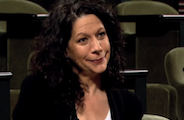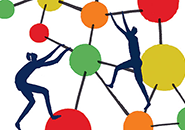“People think science is linear, but there are so many ways to approach a problem,” says biophysicist Adam Cohen. “Creativity is the key to everything.”
That is to say, the road to discovery may depend less on technical expertise than on a researcher’s ability to choose the right questions, design an elegant experiment, follow unexpected leads, and turn failures into opportunities. HHMI scientists are known for these qualities, and in May, the Institute selected Cohen and 26 other highly creative scientists to join the ranks as new investigators. (To learn about this selection process, see the Web Extra sidebar, "Choosing the Newest HHMI Investigators".)
Chosen from among 1,155 applicants and based at 19 host institutions nationwide, the new investigators are exploring a broad swath of biology, asking how songbirds learn to sing, how cells sense mechanical forces, and what we can learn about human evolution from ancient DNA, among other questions. Once officially on board, these new HHMI investigators will have the freedom to stretch their imaginations in unexpected directions.
It’s impossible to know where these scientists’ instincts will take them, but HHMI is confidently investing $150 million in the group over the next five years to support their exploration.
Page 2 of 6

Bioelectrical Phenomena
When Adam Cohen reversed his thinking about how microorganisms carry out a life-sustaining transformation, he turned a looming research failure into a boon for the neuroscience community. Cohen had been puzzling about a member of the protein family known as microbial rhodopsin. Single-celled microorganisms called archae living in the Dead Sea use this form of rhodopsin like a personal photovoltaic cell to convert sunlight into electricity. His research group at Harvard University spent two years trying to figure out the mechanism of the reaction, but they didn’t get far. “I learned a lot, but it wasn’t really anything people didn’t already know,” he recalls. It was time to abandon the pursuit, but Cohen was determined to find some way to salvage the knowledge and rhodopsin-specific research tools he had developed.
Bacteria mastered the conversion of sunlight into energy long ago, but nature seems to have found the reverse reaction—converting biological voltage changes into light—less useful. That’s frustrated neuroscientists, because neurons communicate with one another through electrical impulses, and researchers have longed for a way to directly visualize that activity. Cohen, who says he was vaguely aware of this need, wondered if it might be possible to coax the rhodopsin protein into running in reverse.
At the simplest level, the task was easier than Cohen expected. “It turns out that without any modifications, the protein is a little bit fluorescent, and the fluorescence is sensitive to membrane voltage,” he says. But “that’s entirely a side effect of the protein’s natural role, so there’s been no selective pressure to make the effect large or good.” That’s where Cohen came in.

“I get a real kick out of applying physical principles that have not been fully understood or applied before, to find new ways to visualize what’s going on in biological systems,” Cohen says. He has already distributed his rhodopsin-based voltage indicator to more than 100 labs, and the chemists and physicists in his lab are quickly learning how to work with living cells so they can investigate bioelectrical phenomena. Some will use rhodopsin to compare neuronal activity in induced pluripotent stem cells derived from healthy patients to activity in cells from people with neurodegenerative disease; others are growing stem cell-derived cardiac cells that pulse in a dish, generating a flash of light from the voltage indicator with each beat. Now, Cohen’s team is trying to make the protein more useful as a research tool, engineering it to be brighter, more sensitive, or less likely to perturb cells. The more broadly applicable his tools are, the better, he says.
Page 3 of 6

Secrets of the Past
Like Cohen, Nicole King, an evolutionary biologist at the University of California, Berkeley, has developed a tool whose full potential she intends to exploit—again, from a microscopic organism with some extraordinary talents. Choanoflagellates float and flit about as single cells in oceans, rivers, streams, and puddles—pretty much anywhere there’s water. They can also divide and cling together, balling up to form multicellular colonies that resemble embryos of some animals. To King, the process is reminiscent of the kind of cellular cooperation that must have happened when the first multicellular animals evolved from their single-celled ancestors more than 600 million years ago.
King first learned of choanoflagellates as a graduate student at Harvard University, where her curiosity about developmental biology brought her to work in the labs of microbiologist Richard Losick, an HHMI professor, and paleontologist Andrew Knoll. Microscopists discovered the organisms in the 1840s and proposed that they might be closely related to animals, but molecular biologists completely ignored the simple organisms, according to King. She was convinced that choanoflagellates could unlock important secrets of the past, but there were no genetic tools to study them. So she took it upon herself to develop the tools.
For her postdoctoral research, she joined the lab of HHMI Investigator Sean B. Carroll at the University of Wisconsin–Madison, who was intrigued by King’s unconventional and ambitious proposal. There were no choanoflagellate experts to turn to for advice, so King first spent time in the lab of an “old-school protistologist” at the ATCC, a nonprofit biological resource center in Virginia, to learn how to grow and care for related organisms. Fortuitously, marine ecologists visiting the ATCC happened across some colony-forming choanoflagellates in their water samples, so King packed them up and took them back to Madison—where they immediately stopped forming colonies. “I would look at these cultures day and night, and do various things to them hoping they would form colonies,” she says. “They wouldn’t. Actually, they would form a few colonies sporadically—just often enough to break my heart.”

King was staking her research program on her ability to study colony formation in this finicky little protist, so eventually she decided she needed a different approach. She would sequence the genome of the organism, compare it to the genomes of better-studied organisms, and see what she learned. Because choanoflagellates are grown in the presence of prey bacteria, she and her lab group at Berkeley first treated her cultures with antibiotics to reduce the amount of bacterial DNA. “Suddenly and unexpectedly,” she says, “we observed tons of colony formation.”
The antibiotics altered the community of bacteria coexisting with her choanoflagellates, killing off one species and giving another an opportunity to thrive. Boosting the population of that second species triggered colony formation. King was thrilled. Not only did she now have a straightforward way to coax choanoflagellates into colonies, she also had an easy-to-manipulate system for studying how bacteria influence the biology of other organisms. “We know that the first animals evolved in a sea of bacteria,” she says. “So there’s this exciting idea that multicellularity might be a response to chemical cues produced by bacteria.” At the same time, her lab’s recent discovery that bacteria isolated from the guts of mice and humans also have a colony-promoting effect on choanoflagellates has King planning a new line of research on how microbes influence animal biology.
Page 4 of 6

Search for Truth
The origins of Johannes Walter’s research program were no less compelling, but somewhat less deliberate. As an undergraduate at the University of California, Berkeley, Walter was energized by discussions in his art history and literature classes. But he met with an unexpected struggle. “I didn’t realize that in the humanities, the idea is to put forth a reasonable argument and then defend it. I thought you were supposed to find an ultimate truth,” he says. “So I’d get halfway through writing a paper and see a way someone could make a counter argument to my idea, and I’d have to start over. I’d be up all night.”
Meanwhile, his quest for truth aligned perfectly with the culture Walter found on the science side of campus, so he focused his energy there and earned a biochemistry degree. Today, Walter’s lab group at Harvard Medical School is searching for answers about how cells repair damaged DNA. DNA repair is a crucial response to toxins and environmental insults, and to errors introduced during routine cellular processes. With errors of many types lurking within a long and winding DNA code, cells need an assortment of tools to find and correct them to maintain the integrity of their genome.
| Watch as helicase unravels DNA during replication. |
Contemplating the orchestration demanded by that vigilance is more absorbing than Walter ever imagined, he says, but it’s a field he stumbled into. In 2006, he was setting up biochemical experiments to investigate the enzyme responsible for unzipping a DNA molecule’s twisted strands, exposing the information inside so that replication can begin. To investigate how the enzyme, a helicase, traveled along the double helix, he created a physical obstruction by linking the two DNA strands together—reasoning that if the circular enzyme tried to slide along one strand, it would collide with the crosslink and stall, unable to continue. Walter’s team added the modified DNA to an extract from frog cells that contained the molecules necessary for DNA replication, and waited to see how the helicase would handle the obstacle. To their surprise, although the helicase stalled temporarily, it eventually moved forward.
The researchers learned that the frog extract contained repair proteins that removed the obstacle, known as an interstrand crosslink, enabling the replication machinery to proceed. Researchers knew that cells repair these lesions; when they don’t—as occurs in patients with the inherited disease known as Fanconi anemia—cancer often develops. But no one had been able to recreate interstrand crosslink repair in a simple, easy-to-manipulate system.

Walter saw this unexpected result as an opportunity to investigate the process more deeply, and has since worked out the details of how the helicase reorganizes itself after it binds DNA, and how swapping of DNA between chromosome strands contributes to the repair. Further, his team has identified the specific repair defect responsible for Fanconi anemia. With this system, as well as a technique he devised for monitoring individual DNA molecules during replication, Walter plans a much more comprehensive description of DNA repair mechanisms, which he says will lay the groundwork for rational cancer therapies.
Page 5 of 6

An Original
Yukiko Yamashita grew up in Japan with a father who valued originality above all else. He was eccentric, she says, but he instilled in her an untempered imagination that has led her, more than once, to discoveries that have surprised her colleagues and changed the way biologists think about how stem cells divide.
“Your conclusions shouldn’t be influenced by anyone else,” her father taught her. “You have to come up with your own uniqueness.” Today, when she thinks about a scientific problem, she says, “I don’t care what people in the field are proposing. It’s not that I think they’re wrong—they’re probably right. But I don’t start from that place.”
As a graduate student in biophysics at Kyoto University in Japan, Yamashita loved experimenting, but struggled because she had no female role models. Her motivation waned. It wasn’t until she began a postdoctoral position in Margaret Fuller’s lab at Stanford University that Yamashita found herself in a supportive environment where she could let her imagination run wild. “I could feel my cells breathing,” she recalls.

She turned her attention to the asymmetric way in which stem cells divide, generating one cell that remains a stem cell and another that becomes more specialized. Working with fruit fly cells, she showed that the fate of stem cells after division depends on inheritance of a cell structure called the centrosome. The centrosome works with components of the cell skeleton to ensure that daughter cells receive the appropriate allotment of chromosomes when a cell divides. A second centrosome is produced prior to cell division, and Yamashita discovered that the cell inheriting the mother cell’s original copy remains a stem cell. The daughter cell that receives the duplicate will differentiate into a more specialized cell. Other labs went on to show that this surprising mechanism also regulates asymmetry in cells from other organisms.
In her lab at the University of Michigan, Yamashita remains focused on asymmetric cell division, but recent findings have her thinking about the phenomenon much more broadly. “We used to think that asymmetry is a special case,” she says, explaining that even for stem cells, divisions that give rise to two identical cells are thought to be the norm, and only under certain circumstances does the balance shift. “But I’m starting to think it is inevitable. Every cell division is asymmetric, whether the cells mean to use that asymmetry or not.” That shift in her view comes from the recent discovery in her lab that every time a stem cell divides, there is a strong bias as to which cell inherits the mother cell’s original X and Y chromosomes.
| In an interview for the MacArthur Foundation, Yukiko Yamashita explains her research. |
“It completely flipped my thinking,” she says. The generally accepted model is that cells activate certain signaling to trigger asymmetric division. “But if every single cell division is asymmetric, when you have to make it equal, what do you have to do?” Finding out, she says, could take her a long way toward understanding how an organism develops from a single cell.
Page 6 of 6

Shifting His Gaze
Tirin Moore grew up in a family that embraced a broad curiosity. He says his father, a clerk at the San Francisco Chronicle who read voraciously and taught himself hieroglyphics, electronics, and computer programming, instilled in him some of the core qualities that fuel his research. “I learned from him the fun of asking important questions, even if you weren’t going to use the answer for any particular purpose,” Moore says. “We’d have long discussions about all sorts of things, including the brain—or at least our version of what we thought the brain was. It was all just guesswork and talk,” he says, but the casual debates captured his imagination.
When he was exposed to the foundations of neuroscience for the first time as an undergraduate at California State University, Chico, everything was exciting and new. He was suddenly equipped to ask the right questions. “It was incredible to be able to begin to explore,” he recalls.
Since then, Moore has kept his curiosity focused on the fundamental problem of how the brain uses sensory information. In his lab at Stanford University, he wants to understand the neural circuitry that enables us to focus our attention and ignore irrelevant information, as we do when we tune out others’ chatter in a crowded room or ignore visual distractions to focus more keenly on an object of interest. “There’s a huge bottleneck of information that comes in from the senses,” he says. “So what determines which information gets processed completely, and remembered, and acted upon?”
When he began to investigate how the brain integrates visual information with movement, Moore discovered that the motor-related neurons that control eye movements—shifting the gaze four or five times a second and smearing the visual scene across the retina each time—actually help focus attention. Experiments with rhesus monkeys have shown that, before the gaze shifts to a target of interest, neurons in the brain’s frontal eye field fire more strongly. These signals serve to produce the movement and to enhance the strength of sensory information in the visual cortex corresponding to the visual target. Importantly, Moore says, the enhancement occurs even when movements are planned, but not executed.
|
WEB EXTRA Learn how HHMI finds creative scientists with the potential to make groundbreaking discoveries. |
When Moore became an HHMI early career scientist in 2009, he saw the appointment as an opportunity to deepen his research question. He devised experiments that led him to the discovery that mechanisms related to simply planning a gaze shift to a visual target, without actually moving the eyes, is enough to improve attention and sensory processing in the visual cortex. “When you prepare an eye movement to a location every few hundred milliseconds, you’re mustering up information about the target to help plan the movement,” he explains. “When you do that, you are necessarily filtering out information about the location—and that filtering really is attention.”
Moore has already identified some of the neurons and circuits involved in this cognitive function, but there’s still a lot to learn about the neural circuitry that controls attention—including what goes wrong when it fails, such as in people with attention deficit disorders. “There’s still a lot of low-hanging fruit that we can pick with some elegant experiments and a lot of hard work,” Moore says. “It’s very exciting that we can now go after them. I can’t wait.”
- 1
- 2
- 3
- 4
- 5
- 6




































































